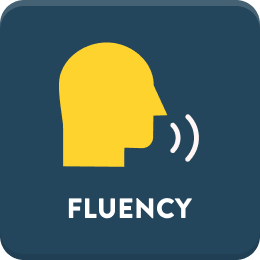
Almost every reader, whether they are struggling or not in school, could use an improvement in their reading fluency. The definition of reading fluency is the ability to read with speed, accuracy, and proper expression. If a student is reading at a good pace and without many errors, their comprehension overall will generally improve. This is essentially what we want as educators. Students that read correctly will make fewer mistakes.
However, what is the correct way to build upon fluency? As certified reading specialists who have special degrees and certificates in education will tell you, always use research-based strategies and activities for improving reading fluency as the studies conducted on students with these strategies have proven they work time and time again. Why waste your time with activities that have not been proven to work when research-based strategies will take the guesswork out?
Here are five research-based strategies that will improve reading fluency for essentially any student.
Focus on Fry’s Instant Sight Words Early and Often
In the past, the sight word list that used to be utilized in the classroom were the Dolch words. This sight word list was created by Dr. Edward William Dolch mostly in the 1930s and included the most commonly used words in the English language. Since then, other words have arrived in our culture to replace some of the words on the Dolch list. The Fry List, created by Dr. Edward Fry, is an updated version of these words.
The first 100 words on the Fry list make up about half of whatever a child or adult will come across reading in newspapers, books, or any publication. By just teaching a child these 100 words through flashcards or some other approach you are using, they will be able to master 50 percent of what they are reading regardless of how difficult it is. Once the first 100 words have been mastered, move on to the next 200 words on the list as the first 300 words make up about two-thirds of all written material. Because of this, even if a child is struggling mightily with phonics and decoding, they can still learn to read a good majority of the basic words by studying Fry’s sight word list.
If possible, kindergarten students should have mastered the first 100 words on Fry’s list by the end of the school year. If they can achieve this, they should be in good shape to continue to build their fluency as time goes by.
A Systematic and Sequential Phonics and Decoding Program
The National Reading Panel (NRP), founded in 1997 at the request of the United States government, is one of the authoritative organizations when it comes to developing reading skills. The NRP states that the two main predictors in how well a child will learn to read are letter knowledge and phonemic awareness. Usually taught in small groups, a strong systematic and sequential phonics and decoding problem will teach the students letter knowledge, phonemic awareness, and larger word families. The program travels in sequential order, so easier patterns are learned first and then the skills build upon one another. There are plenty of systematic and sequential phonics and decoding programs available on the market.
Technology-Assisted Support Provided By LightSail
Living in the 21st century means that we are able to utilize technology in a way that others in the past have only dreamed of. One of these ways is to increase reading fluency in children through utilizing electronic devices. For example, in a classroom full of 20 to 30 students, it can be difficult for the teacher to ensure they are providing one-on-one instruction to all the kids in regards to improving reading achievement.
With LightSail, a comprehensive literacy program, not only will it provide perfectly leveled books for each student, but educators can also monitor student improvement through LightSail’s Fluency Builder and Running Records. The digital monitoring will record the students as they read the chosen passages and store these readings so they can be reviewed later on in comparison to how they are performing overall.
Use Reader’s Theater for Expression
Reading with expression is often the forgotten element of fluency. No one wants to listen to someone read aloud with the inflection of a robot. And if you have listened to even adults reading their prepared speeches to the public, they fail at reading with expression at an alarming rate. Reader’s theater will improve expression, voice control, and phrasing as the students learn how to read in a manner that is conducive to the context of what they are reading.
Increase Reading Time
This research-based strategy may sound too simple, but it will definitely improve reading fluency. By spending more time reading, students will begin to strengthen their fluency skills. Instead of reading only an hour a week, increase the amount of reading time to five hours a week. Of course, make certain these books are at their appropriate reading level so they do not enter the frustration zone that can limit their motivation to read.
Posted on 7.Jul.21 in Literacy Strategies




